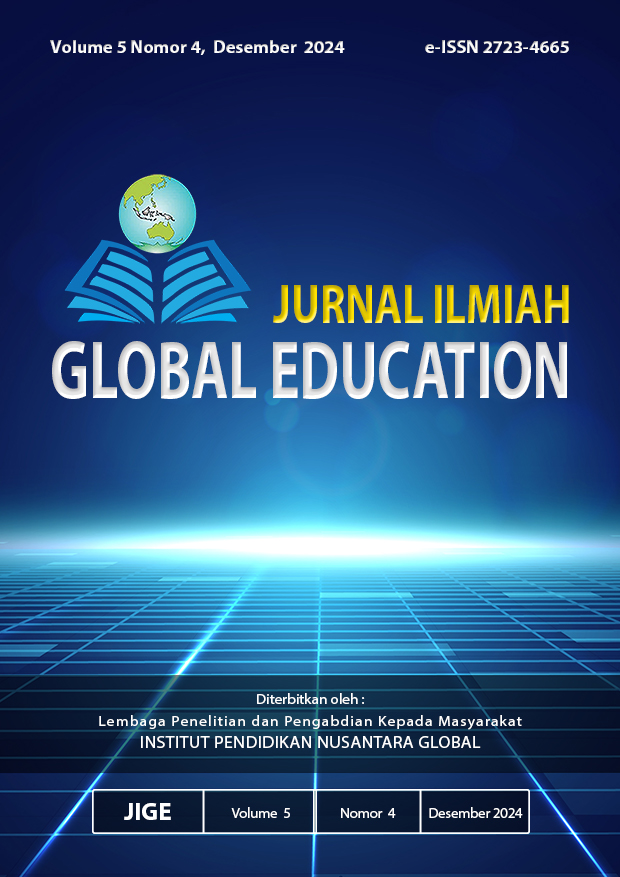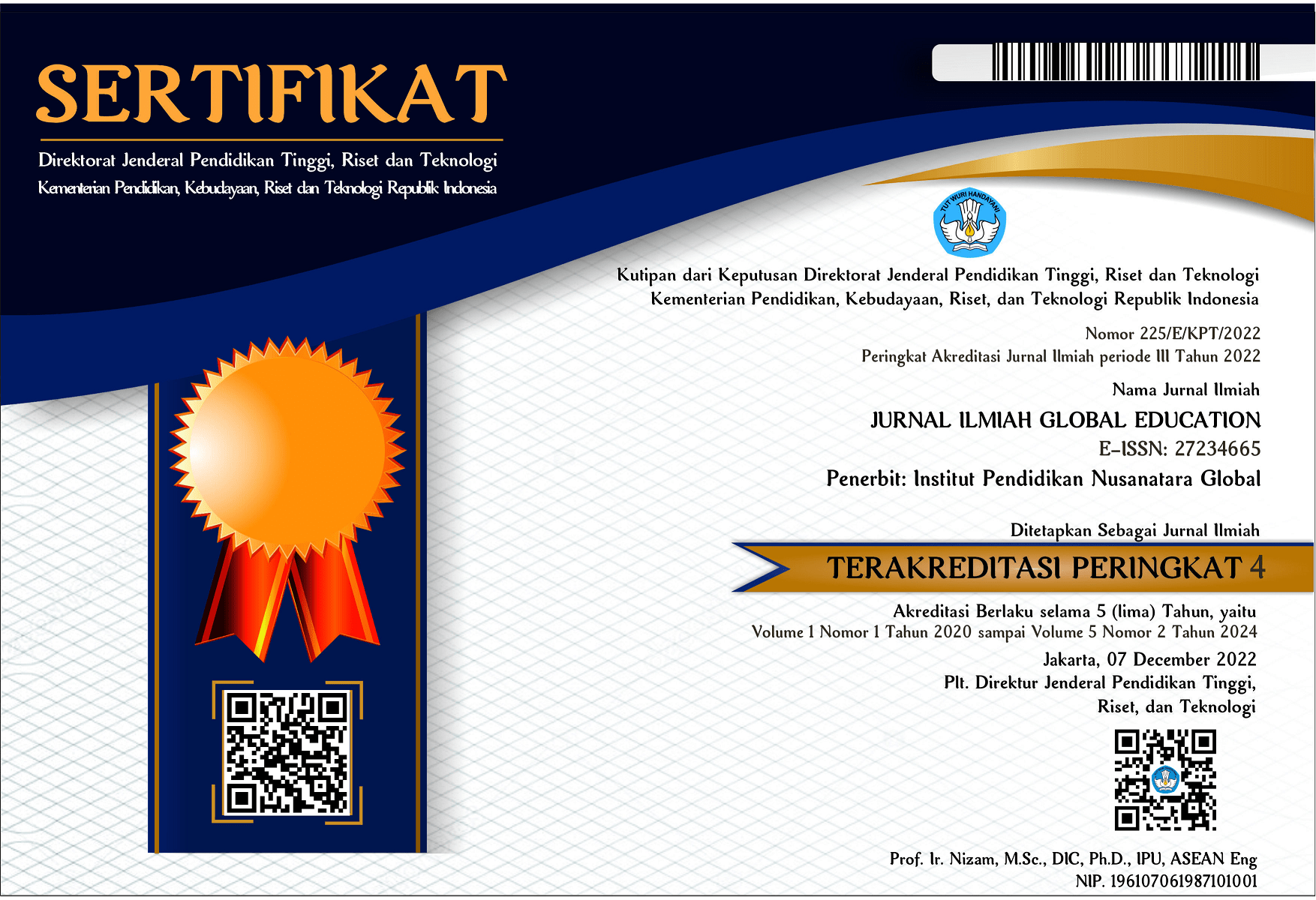Efektivitas Taping dan Walking Exercise untuk Mengurangi Nyeri pada Pasien Diabetes Mellitus Tipe 2 dengan Peripheral Artery Disease: Case Study
DOI:
https://doi.org/10.55681/jige.v5i4.3638Keywords:
Diabetes Mellitus, Kinesiology Tapping, Peripheral Artery Disease, Walking ExerciseAbstract
Peripheral Artery Disease (PAD) is a condition in which the arteries that supply blood to the legs experience narrowing caused by atherosclerosis, which is in the form of partial narrowing (stenosis) or total narrowing or blockage (occlusion). Kinesio tapping is also one of the modalities that can also be used but references to kinesio tapping on PAD are still very minimal or limited, but physiologically tapping can cause neovascularization due to wrinkles in the form of skin lifting, which increases the space between the skin and muscles and increases blood circulation and lymphatics that are under pressure, so that good oxygenation can occur in the vascular.
Downloads
References
Aday, A. W., & Matsushita, K. (2021). Epidemiology of Peripheral Artery Disease and Polyvascular Disease. Circ Res, 128(12), 1818-1832. doi:10.1161/CIRCRESAHA.121.318535
Azizah, A. N. (2022). Hubungan Kepatuhan Manajemen Diabetes Dengan Kejadian Peripheral Artery Disease (PAD) Di Puskesmas Sukoharjo. 1-10.
Banerjee, G., Briggs, M., & Johnson, M. I. (2020). The immediate effects of kinesiology taping on cutaneous blood flow in healthy humans under resting conditions: A randomised controlled repeated-measures laboratory study. PLoS One, 15(2), e0229386. doi:10.1371/journal.pone.0229386
Bauersachs, R., Zeymer, U., Briere, J. B., Marre, C., Bowrin, K., & Huelsebeck, M. (2019). Burden of Coronary Artery Disease and Peripheral Artery Disease: A Literature Review. Cardiovasc Ther, 2019, 8295054. doi:10.1155/2019/8295054
Behrendt, C. A., Thomalla, G., Rimmele, D. L., Petersen, E. L., Twerenbold, R., Debus, E. S., . . . Zyriax, B. C. (2023). Editor's Choice - Prevalence of Peripheral Arterial Disease, Abdominal Aortic Aneurysm, and Risk Factors in the Hamburg City Health Study: A Cross Sectional Analysis. Eur J Vasc Endovasc Surg, 65(4), 590-598. doi:10.1016/j.ejvs.2023.01.002
Bevan, G. H., & White Solaru, K. T. (2020). Evidence-Based Medical Management of Peripheral Artery Disease. Arterioscler Thromb Vasc Biol, 40(3), 541-553. doi:10.1161/ATVBAHA.119.312142
Ch Salim, O., Sudharma, N. I., Kusumaratna, R. K., & Hidayat, A. (n.d.). Validity and reliability of World Health Organization Quality of Life-BREF to assess the quality of life in the elderly.
Criqui, M. H., Matsushita, K., Aboyans, V., Hess, C. N., Hicks, C. W., Kwan, T. W., . . . Stroke, C. (2021). Lower Extremity Peripheral Artery Disease: Contemporary Epidemiology, Management Gaps, and Future Directions: A Scientific Statement From the American Heart Association. Circulation, 144(9), e171-e191. doi:10.1161/CIR.0000000000001005
Frank, U., Nikol, S., Belch, J., Boc, V., Brodmann, M., Carpentier, P. H., . . . Terlecki, P. (2019). ESVM Guideline on peripheral arterial disease. Vasa, 48(Suppl 102), 1-79. doi:10.1024/0301-1526/a000834
Gerhard-Herman, M. D., Gornik, H. L., Barrett, C., Barshes, N. R., Corriere, M. A., Drachman, D. E., . . . Walsh, M. E. (2017). 2016 AHA/ACC Guideline on the Management of Patients With Lower Extremity Peripheral Artery Disease: Executive Summary: A Report of the American College of Cardiology/American Heart Association Task Force on Clinical Practice Guidelines. Circulation, 135(12), e686-e725. doi:10.1161/CIR.0000000000000470
K, K., & , K. W., Tangvarasittichai O and Tangvarasittichai S. (2018). Ankle brachial index (ABI) measurement associated with high sensitivity-Creactive protein, insulin resistance and pulse pressure levels in type 2 diabetes mellitus patients. Madridge Journal of Diabetes, 2, 32-36. doi:10.18689/mjd.2018-106
McDermott, M. M. (2018). Exercise Rehabilitation for Peripheral Artery Disease: A REVIEW. J Cardiopulm Rehabil Prev, 38(2), 63-69. doi:10.1097/HCR.0000000000000343
McDermott, M. M., Dayanidhi, S., Kosmac, K., Saini, S., Slysz, J., Leeuwenburgh, C., . . . Ferrucci, L. (2021). Walking Exercise Therapy Effects on Lower Extremity Skeletal Muscle in Peripheral Artery Disease. Circ Res, 128(12), 1851-1867. doi:10.1161/CIRCRESAHA.121.318242
McDermott, M. M., Spring, B., Tian, L., Treat-Jacobson, D., Ferrucci, L., Lloyd-Jones, D., . . . Rejeski, W. J. (2021). Effect of Low-Intensity vs High-Intensity Home-Based Walking Exercise on Walk Distance in Patients With Peripheral Artery Disease: The LITE Randomized Clinical Trial. JAMA, 325(13), 1266-1276. doi:10.1001/jama.2021.2536
Muhammad Irvan Affandi, d. A. R., Sp.KFR. (2021). Efek Aplikasi Kinesio Taping Terhadap Stabilitas Postural Pada Orang Sehat. 40-47.
Nopi Eprianti, Y. A. U., Sutri Sari Sabrina Nainggolan. (2022). Pengaruh Walking Exercise Terhadap Nilai Kadar Glukosa Darah Pada Penderita Diabetes Mellitus Tipe 2 Di Ruang Rawat Inap Rsud Tugu Jaya Kabupaten Ogan Komering Ilir Tahun 2022. Jurnal Kesehatan Bina Husada, 14, 70-75.
Park, S. Y., Kwak, Y. S., & Pekas, E. J. (2019). Impacts of aquatic walking on arterial stiffness, exercise tolerance, and physical function in patients with peripheral artery disease: a randomized clinical trial. J Appl Physiol (1985), 127(4), 940-949. doi:10.1152/japplphysiol.00209.2019
Ratnasari, P. M. D., Andayani, T. M., & Endarti, D. (2019). Analisis Kualitas Hidup Pasien Diabetes Melitus Tipe 2 Berdasarkan Pola Peresepan Antidiabetik dan Komplikasi. Jurnal Manajemen Dan Pelayanan Farmasi (Journal of Management and Pharmacy Practice), 9(4). doi:10.22146/jmpf.45862
Rizka Fadhila , R. N. P. (2019). Pengaruh Latihan Fisik Terhadap Kadar Glukosa Darah Penyandang Diabetes Melitus Tipe 2: Literature Review. Jurnal Keperawatan Abdurrab, 3, 17-24.
Schieber, M. N., Pipinos, II, Johanning, J. M., Casale, G. P., Williams, M. A., DeSpiegelaere, H. K., . . . Myers, S. A. (2020). Supervised walking exercise therapy improves gait biomechanics in patients with peripheral artery disease. J Vasc Surg, 71(2), 575-583. doi:10.1016/j.jvs.2019.05.044
Takahara, M. (2021). Diabetes Mellitus and Lower Extremity Peripheral Artery Disease. JMA J, 4(3), 225-231. doi:10.31662/jmaj.2021-0042
Wibisana, K. A., Subekti, I., Antono, D., & Nugroho, P. (2019). Hubungan antara Rasio Neutrofil Limfosit dengan Kejadian Penyakit Arteri Perifer Ekstremitas Bawah pada Penyandang Diabetes Melitus Tipe 2. Jurnal Penyakit Dalam Indonesia, 5(4). doi:10.7454/jpdi.v5i4.227
Downloads
Published
How to Cite
Issue
Section
License
Copyright (c) 2024 Audina Puteri Fasya Theofany, Dwi Rosella Kumala Sari

This work is licensed under a Creative Commons Attribution-ShareAlike 4.0 International License.













